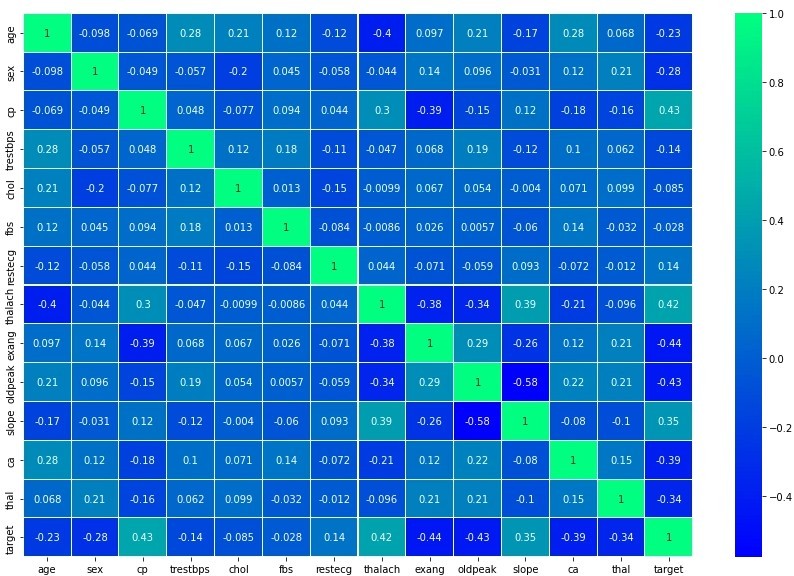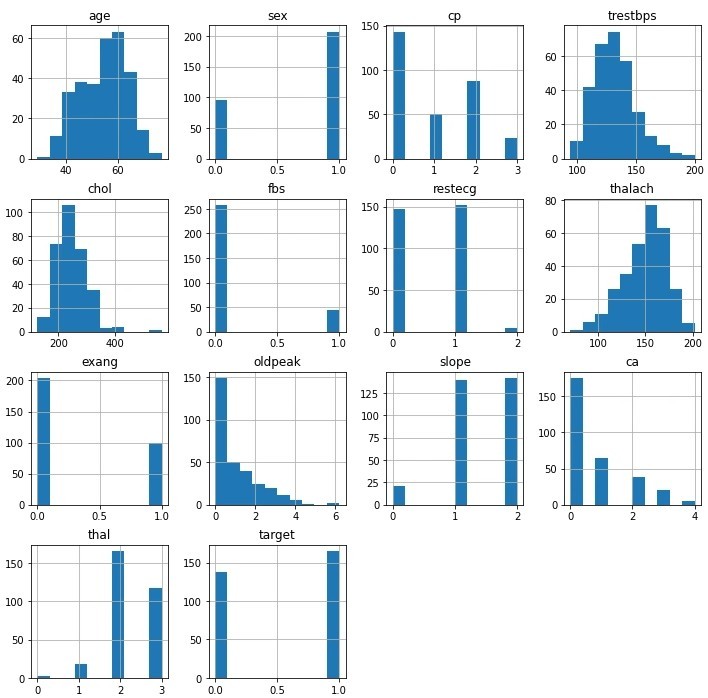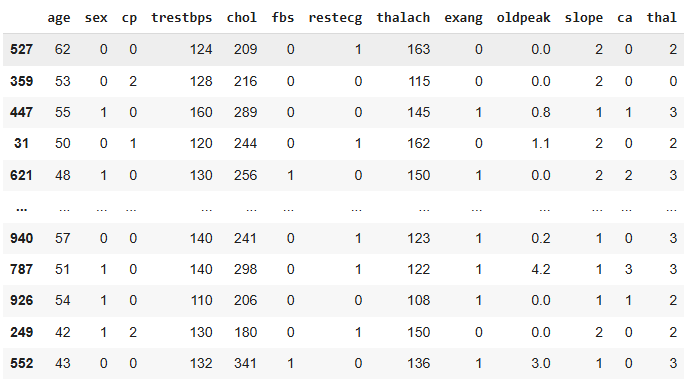Heart Disease Prediction using Logistic Regression
Machine Learning has become a cornerstone of modern technology applications worldwide.
In healthcare, it can play a pivotal role in aiding physicians with quicker and more accurate diagnoses.
In this article, we focus on the Heart Disease dataset to predict patient outcomes—whether they have heart disease or are normal.
This approach promises to make healthcare more efficient by reducing the time required for diagnoses.
#Import libraries
import numpy as np
import pandas as pd
import matplotlib.pyplot as plt
import seaborn as sns
Dataset Link: https://www.kaggle.com/datasets/johnsmith88/heart-disease-dataset
#Load the dataset
df=pd.read_csv("heart.csv")
df.head()
Output:

#To get no. of rows and columns
df.shape
Output:
(1025, 14)
#To get no. of rows and columns
df.info()
< class 'pandas.core.frame.DataFrame'>
RangeIndex: 1025 entries, 0 to 1024
Data columns (total 14 columns):
# Column Non-Null Count Dtype
--- ------ -------------- -----
0 age 1025 non-null int64
1 sex 1025 non-null int64
2 cp 1025 non-null int64
3 trestbps 1025 non-null int64
4 chol 1025 non-null int64
5 fbs 1025 non-null int64
6 restecg 1025 non-null int64
7 thalach 1025 non-null int64
8 exang 1025 non-null int64
9 oldpeak 1025 non-null float64
10 slope 1025 non-null int64
11 ca 1025 non-null int64
12 thal 1025 non-null int64
13 target 1025 non-null int64
dtypes: float64(1), int64(13)
memory usage: 112.2 KB
#To get the detail statistical information about dataframe
df.describe().T

#checking missing values
df.isnull().sum()
Output:
age 0
sex 0
cp 0
trestbps 0
chol 0
fbs 0
restecg 0
thalach 0
exang 0
oldpeak 0
slope 0
ca 0
thal 0
target 0
dtype: int64
#create a heatmap taking co-relation matrix
plt.figure(figsize=(15,10))
sns.heatmap(df.corr(),linewidth=.01, annot=True, cmap="winter")
plt.show()

From the above heatmap, we are observing that CP and target have a positive correlation. That means who has a large risk of chest pain results in a greater chance to have heart disease.
df.hist(figsize=(12,12))
plt.show()

#Choose X and y [X: input variables, y: output variable]
X=df.iloc[:,:-1]
y = df.iloc[:, -1]
#Split dataset into training and testing data
from sklearn.model_selection import train_test_split
X_train,X_test,y_train,y_test=train_test_split(X, y, test_size=0.25, random_state=42)
X_test

y_test

#Create a Logistic Regression Model
from sklearn.linear_model import LogisticRegression
model=LogisticRegression()
#trained the model
model.fit(X_train,y_train)
#Model prediction over X_test data
y_prediction=model.predict(X_test)
print(y_prediction)

#To get the accuracy
from sklearn.metrics import accuracy_score
print(accuracy_score(y_test,y_prediction))
Output:
0.8054474708171206
#Model Implementation
input=(62,0,0,124,209,0,1,163,0,0.0,2,0,2)
arr=np.asarray(input)
#print(arr)
arr_reshaped=arr.reshape(1,-1)
#print(arr_reshaped)
pred1=model.predict(arr_reshaped)
if(pred1==1):
print("patient having heart disease")
else:
print("patient having no heart disease")
Output:
patient having heart disease
About the Author
Silan Software is one of the India's leading provider of offline & online training for Java, Python, AI (Machine Learning, Deep Learning), Data Science, Software Development & many more emerging Technologies.
We provide Academic Training || Industrial Training || Corporate Training || Internship || Java || Python || AI using Python || Data Science etc


